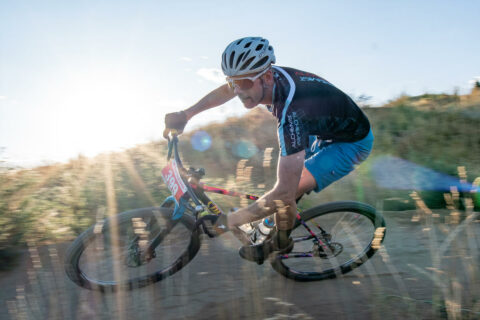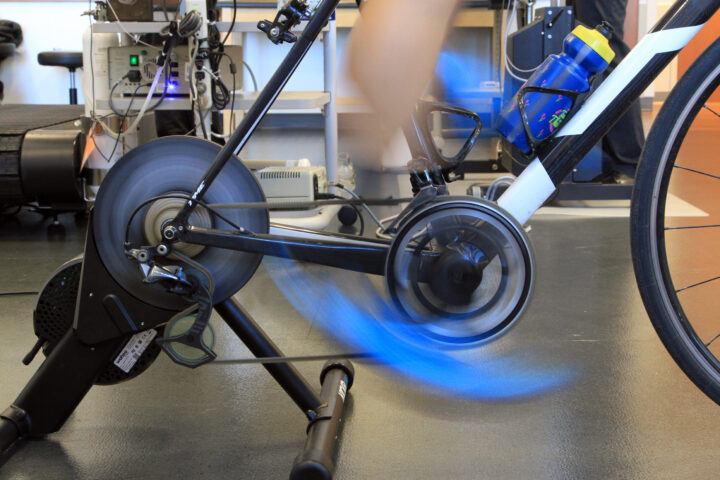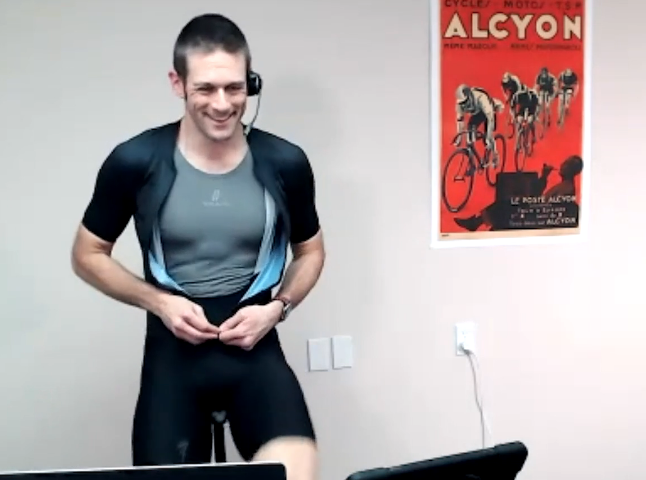
 Cycling Interval Training Pathway
Cycling Interval Training Pathway
Experts in this Pathway
What You’ll Learn
Our Guide to Cycling Interval Workouts
Interval workouts are a fundamental part of any endurance training program. In theory, intervals sound relatively easy: pick a length, pick an intensity, grab the bike and head out the door. In practice, however, there are many nuances to properly executing interval workouts. Do them right, and interval workouts are one of the most effective ways to train. Do them wrong, and you waste time and may cause yourself unnecessary suffering.
Here you will learn exactly what an interval is, why you should do certain intervals given the goals you have, and how you can execute different interval workouts to perfection. You’ll also learn more about how to analyze different workouts.
This Pathway contains content from many of our experts, including Sebastian Weber, Neal Henderson, Trevor Connor, Dr. Stephen Cheung, and Head Coach Ryan Kohler, to name a few. Follow this Pathway to start with the basics of interval workouts and progress to specific workouts and Workshops to improve how you execute and analyze your performances.
Intervals 101
Interval workouts are a critical training technique for any athlete looking to generate adaptations and improve fitness and performance. In contrast to training races, for example, intervals allow an athlete to add intensity in a controlled manner, to target specific energy systems, and create opportunity for understanding what is really going on inside. Coaches Trevor and Ryan break down why intervals are so important. Click below to watch this video.

Intervals 101
“This is an interval.”
“This is a football.” American football coach Vince Lombardi was famous for starting team talks with that line. The message was simple: Never forget the basics. So, let’s start with the fundamentals and define what we mean by “intervals.”
We have two ways of producing energy. The aerobic energy system requires oxygen, and doesn’t fatigue easily. The anaerobic energy system is used to produce fast and strong efforts, doesn’t require oxygen, and doesn’t last long.
Dive in with Coach Trevor and other leading experts, including exercise physiologist Robert Pickels, as they review the basics. Their lessons will help you create your best interval sessions. For example, you’ll learn about some of the key concepts of aerobic intervals, including the importance of rest periods and how to maintain consistency. For anaerobic intervals, learn how much time you need between intervals and how to improve your late-race fitness. Read this article below.

This Is an Interval
Your guide to HIT: High-Intensity Training
Coach Trevor Connor takes a deep dive into high-intensity training (HIT), using the science of bioenergetics to illustrate the benefits and limits of this critical training method. Click below to read this article.

Your Guide to High-Intensity Training
How much HIT is appropriate?
In this Fast Talk podcast episode, Coach Trevor Connor and Chris Case, with the help of a star-studded lineup of coaches and physiologists, explore the science of high-intensity training, including the many myths and misconceptions and its limits. They also recommend the most effective intervals to perform and how to get the most out of their execution. Click below to listen to this podcast.

How Much High-Intensity Training Do You Need?

How to Use HIIT As a Time-Crunched Athlete
A deep dive on intervals
From threshold interval workouts to high-intensity interval training (HIIT) intervals, and the many types in between, this is your starting point to learn how and why you should select certain intervals, how to integrate them into your training plan, when to do them, and how to properly execute them. Click below to watch this video.

A Deep Dive on Interval Execution
Proper Execution
Don’t over-think it
Here’s your workout for today: Give me 20 seconds at high anaerobic capacity. Now do a 10-second recovery at 65 percent. Then give me one minute at mid-VO2max holding at 100 RPM. Now rest one minute. Alright, now give me a series of 10 one-minute efforts at 102 percent of FTP with increasing cadence. But be careful: If you do these at 99 percent of FTP, you’re working the wrong system.
-Many Coaches, Everywhere
If this is starting to sound like your own intervals or the intervals from a canned training plan, read on. Interval progressions do not have to be this complex. In this series of podcasts, you will first learn three main points:
- Human physiology is complex.
- Properly executing intervals is difficult.
- Interval prescription should be simple.
Click below to listen.

Properly Executing Intervals Is Hard; Keep Your Training Plan Simple
Rest periods change everything
Listen to Sebastian Weber take a seemingly mundane topic of rest periods and turn it into a deep dive into the metabolic environment we create with interval training. Learn the “why” behind the rest period prescriptions and turn your interval workouts into sessions that work for your physiology. Click below to listen.

The Duration and Intensity of Rest Periods Is As Critical As Your Intervals, with Sebastian Weber
Put it in the big gear
Elite coach Neal Henderson joins Chris Case and Trevor Connor to discuss an interval session you’ve probably heard about, and may have incorporated into your training over the years. You’ll also hear from Sebastian Weber of INSCYD, Jim Miller of USA Cycling, and pro cyclist Petr Vakoc as they discuss the nuances of “big gear” training. Learn how these experts use this type of training to improve performance and how you can integrate this into your routine. Click below to listen.

Put It in the Big Gear—We Explore Low-Cadence, High-Torque Training with Neal Henderson
Not all cycling interval workouts are the same
In this workshop, Dr. Stephen Cheung discusses a study comparing steady-state versus fast-start intervals, then uses Xert software to model how a fast-start interval can be a lot more intense to build your fatigue over the course of an interval.
The research suggests that the design of intervals can determine how much benefit or training stimulus you receive, particularly when it comes to how steady they are—or conversely, how fast you start before tapering to a desired level. These factors can help to give you a greater training load and reduce monotony of training while building in specificity for your race needs. Click below for this Workshop.

Intensity Changes Between Fast-Start and Steady Intervals, with Dr. Stephen Cheung
Power isn’t everything
Let’s take a popular interval session: 4×8 minutes. Have you been wondering what percentage of threshold or FTP to target with this interval session? Guess what? Power is the least important number. Yes, you heard that right!
In this Q&A session we review the need for RPE and heart rate to guide an interval session like this. Learn why power is not the critical number and what metrics to follow to ensure you are executing this workout properly. Click below for this Q&A session.

Q&A on Executing 4×8 Intervals, Using Scooters in Training, Recovery Walks, and Micro Training Camps
Dr. Seiler’s short stack intervals
Dr. Stephen Seiler is known for his work on the polarized training model, in which the distribution of low-intensity to high-intensity work is skewed in favor of those easier rides. However, the high-intensity interval sessions are critical for adaptation. In his three-part series, Dr. Seiler analyzes how shorter, Tabata-style efforts fit into his model, discusses best practices for integrating these efforts into a training plan, and compares the impacts of short and long intervals. Hear from Dr. Seiler below in his three-part series.

Dr. Seiler: Short Interval Stacks, Part 1

Dr. Seiler: Short Interval Stacks, Part 2

Dr. Seiler: Short Interval Stacks, Part 3
The classic 4×8
Coach Trevor Connor takes a deep dive into an interval workout that you’ve heard us discuss many times on the Fast Talk podcast—4×8-minute intervals—and one that has been popularized by Dr. Stephen Seiler.

How to Do Dr. Stephen Seiler’s 4×8-Minute Interval Workout
Workouts
Learn by doing: our key cycling interval workouts
Connect your trainer and hop on your bike as we take you through a list of typical interval sessions. We guide you through a series of full workouts, starting with neuromuscular sessions to build strength and power, and then moving to threshold and supra-threshold efforts to improve different areas of your fitness profile. We finish off this series with a pre-race warm-up that you can take and adapt to your needs. Click below for interval workouts. Each post contains custom workout files to help you execute them with precision.

Aerobic Conditioning: Low-Cadence Tempo Intervals

Neuromuscular Workout: Big Gear Standing Starts

Aerobic Conditioning: Sweet Spot Bursts

Structured Workout: Over/Under Intervals with Cadence Focus

Structured Workout: Batman Intervals

Structured Workout: 4×4 Intervals

Structured Workout: 40/20 “On/Off” Intervals

Neuromuscular Workout: Muscle Activation Warm-up & Seated Stomps
How to Analyze Intervals
Assess your execution
You did the work; now, determine if your execution was good or bad.
Starting with Trevor’s classic 5×5 threshold intervals, we walk you through the analysis of this key training session. Why is the rest period only one minute? What are the benefits of this type of workout? How can I maximize the gains from this session? Coaches Trevor and Ryan analyze the power and heart rate responses to show you how to do the same for your threshold workouts.
What if you are completing threshold efforts outdoors? How do we pace ourselves when we move from the trainer to the real world? Learn how to ride a steady pace and deal with terrain changes by tuning into your leg sensations, gearing, and breathing. Watch the below videos.

How to Analyze 5×5 Intervals in TrainingPeaks

Coach’s Corner: Power and Cadence Analysis of Climbing Intervals
Join the conversation
Do you have additional questions or workout examples that you would like to share with our endurance community? Head over to the Forum and post there to collaborate, find additional answers and insights (like this post) on intervals like Dr. Seiler’s Short Stack intervals, and contribute your favorite interval session in the Workout Lab!
STILL NEED HELP?
As we said at the start of this Pathway, intervals are harder to execute properly than many people think. If you still need help, schedule a free consultation with us and we will develop a path forward that is individualized for you.
Or you can schedule time with our coaches to get personalized guidance in a private, guided interval workout session.





